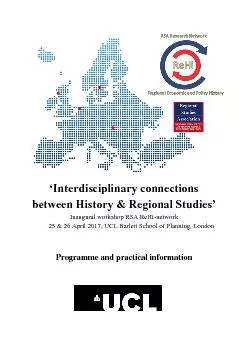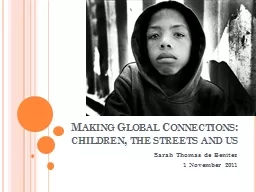PDF-‘Interdisciplinary connections
Author : lucy | Published Date : 2020-11-24
between History Regional Studies Inaugural workshop RSA ReHi network 25 26 April 2017 UCL Barlett School of Planning London Programme and practical information 2 Content Practical
Presentation Embed Code
Download Presentation
Download Presentation The PPT/PDF document "‘Interdisciplinary connections" is the property of its rightful owner. Permission is granted to download and print the materials on this website for personal, non-commercial use only, and to display it on your personal computer provided you do not modify the materials and that you retain all copyright notices contained in the materials. By downloading content from our website, you accept the terms of this agreement.
‘Interdisciplinary connections: Transcript
Download Rules Of Document
"‘Interdisciplinary connections"The content belongs to its owner. You may download and print it for personal use, without modification, and keep all copyright notices. By downloading, you agree to these terms.
Related Documents














